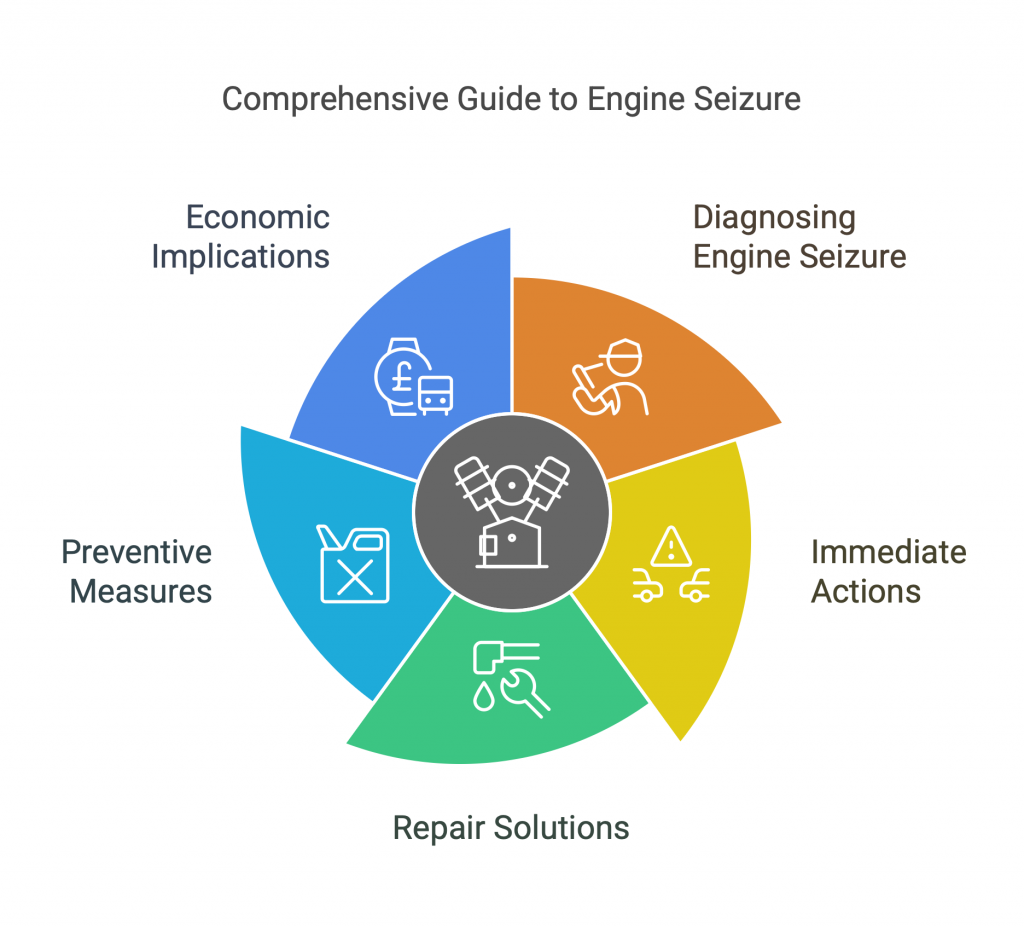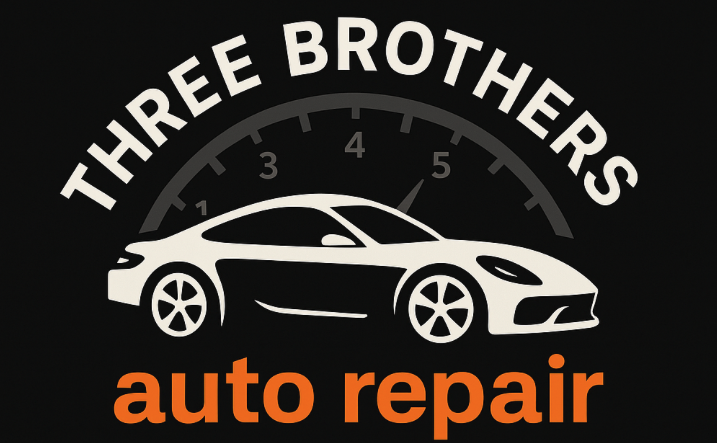Imagine driving leisurely down a sunny highway when suddenly you hear alarming knocking or grinding sounds from beneath your car’s hood. Your heart races as the engine abruptly stops, leaving your vehicle unresponsive and silent. Attempts to restart it prove futile, confirming your suspicion—a seized engine. Engine seizure describes a severe mechanical failure where vital internal components jam, halting engine rotation completely. Such occurrences frequently lead to devastating consequences, compelling vehicle owners to face costly engine replacements or even scrapping the entire vehicle.

- What Exactly Happens When an Engine Seizes?
- Impact on Vehicle Functionality and Owner Experience
- Recognizing Symptoms of Engine Seizure
- Primary Causes Behind Engine Seizure
- Diagnosing a Seized Engine
- Steps to Take if Your Engine Seizes
- Preventive Measures to Avoid Engine Seizure
- Economic Implications of Engine Seizure
- Conclusion and Essential Recommendations
What Exactly Happens When an Engine Seizes?
Engine seizure occurs when critical moving components—such as pistons, crankshafts, connecting rods, or bearings—stop functioning correctly due to extreme friction, overheating, or corrosion. Under normal conditions, pistons glide smoothly within cylinders, supported by continuous lubrication. However, insufficient lubrication or excessive heat causes these components to expand abnormally, gripping cylinder walls tightly and causing immediate seizure. The enormous internal pressures involved may permanently fuse parts together, causing catastrophic, often irreversible damage.
Attempting to restart a seized engine generally worsens the situation, potentially breaking other crucial components such as crankshafts and bearings. Repairing extensive internal damage can quickly become prohibitively expensive, frequently making engine replacement or refurbishment the more cost-effective option.
Impact on Vehicle Functionality and Owner Experience
A seized engine completely immobilizes a vehicle, leaving it unable to start or move, stranding drivers wherever the breakdown occurs. Beyond the obvious inconvenience, this scenario creates significant financial hardship due to high repair or replacement costs, often surpassing the vehicle’s market value. Additionally, owners experience emotional stress and substantial disruption to daily routines, losing their primary mode of transportation, often unexpectedly.
Recognizing Symptoms of Engine Seizure
Early identification of engine seizure symptoms can substantially mitigate damage. Typical indicators include:
- Loud, unusual knocking, grinding, or clunking noises from the engine.
- Difficulty or inability to crank the engine.
- Dashboard warning lights activated, especially those related to oil pressure or overheating.
- Visible smoke or burning smells emerging from the engine compartment.
- Noticeable fluid leaks (oil or coolant) beneath the vehicle.
- Reduced engine power, poor performance, or sluggish responsiveness.
Primary Causes Behind Engine Seizure
| Cause | Explanation | Prevention |
|---|---|---|
| Insufficient Lubrication | Lack of lubrication leads to friction and heat, causing components to fuse. | Regular oil checks, timely oil changes, immediate response to oil warnings. |
| Overheating | Excess heat causes metal expansion and deformation. | Regular coolant checks, maintaining coolant levels, addressing overheating immediately. |
| Corrosion and Rust | Moisture and inactivity cause rust, immobilizing parts. | Proper vehicle storage, moisture control, regular usage, and maintenance. |
| Mechanical Failure and Neglect | Ignoring minor repairs and using incorrect fluids leads to component failure. | Routine inspections, prompt repairs, and using manufacturer-recommended fluids and parts. |
Diagnosing a Seized Engine
Quick and accurate diagnostics are essential to effectively manage engine seizure. Mechanics rely on advanced diagnostic tools—including compression testers, engine analyzers, bore scopes, and detailed visual inspections—to determine seizure causes and evaluate the extent of the damage. Precise diagnosis supports informed decisions about repair or replacement strategies, optimizing outcomes and minimizing costs.
Steps to Take if Your Engine Seizes
Immediate action when suspecting an engine seizure involves:
- Ceasing attempts to restart immediately.
- Checking oil and coolant levels to assess possible causes.
- Conducting a visual inspection for signs of overheating, smoke, or fluid leaks.
- Seeking immediate assistance through roadside help or arranging vehicle transportation to a qualified mechanic.
Repair solutions range from minor component replacements or adjustments to comprehensive engine rebuilds. Severe cases involving extensive internal damage or cracked engine blocks typically necessitate complete engine replacements. When repair expenses approach or surpass the vehicle’s market value, replacement often becomes economically sensible.
Preventive Measures to Avoid Engine Seizure
Proactive, regular maintenance significantly lowers engine seizure risks:
- Conduct consistent oil changes and maintain appropriate oil levels.
- Regularly inspect and manage coolant levels, promptly addressing leaks.
- Schedule routine professional inspections to detect potential problems early.
- Avoid prolonged vehicle inactivity or ensure proper storage preparations.
- Use recommended, high-quality fluids and genuine replacement parts to ensure engine longevity.
- Maintain recommended intervals for major maintenance items, including timing belt replacements and valve adjustments.
Economic Implications of Engine Seizure
| Severity | Typical Cost Range (USD) | Common Repairs or Actions |
| Minor Repairs | $400 – $1,350 | Lubrication correction, minor part replacements, addressing minor overheating issues. |
| Major Repairs/Replacements | $1,350 – $4,000+ | Full engine rebuilds, engine replacements, extensive part replacements (pistons, crankshaft, engine block). |
Damage to critical internal components such as pistons, crankshafts, or engine blocks drastically inflates repair costs. Careful evaluation of repair versus replacement options is essential. In cases of extensive damage, engine or vehicle replacement typically represents the most financially practical solution.
Conclusion and Essential Recommendations
Thoroughly understanding engine seizure—including symptoms, underlying causes, prevention methods, and effective management strategies—is crucial for vehicle owners. Routine maintenance remains the strongest defense against severe engine issues. If your vehicle exhibits any early signs of distress, seek immediate professional assistance to mitigate further damage and reduce overall repair expenses. Proactive care, regular inspections, and swift interventions collectively ensure vehicle reliability, longevity, and safety, providing the best protection against costly engine seizures.
